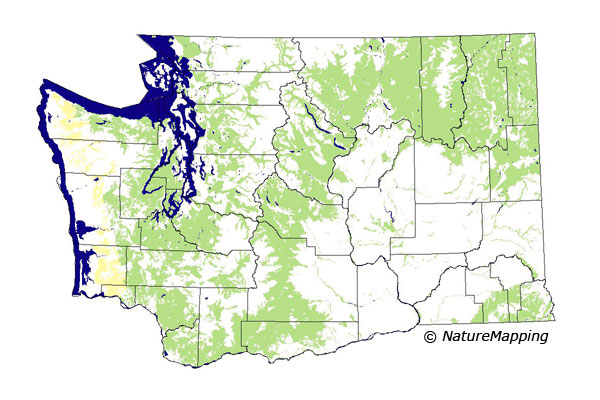 |
Metadata (Data about data or how the map was made)
Legend:
 = Core Habitat
= Core Habitat
 = Marginal Habitat
= Marginal Habitat
Predicted Distribution
Reptiles do not migrate as some birds and mammals, so the colored areas depict
the predicted range for the Rubber Boa year-round. The habitats were identified
using 1991 satellite imagery, other datasets and experts throughout the state,
as part of the Washington Gap Analysis Project.
Other
maps & Information:
|
Distribution and Habitat Requirements
This species can be found in deserts, foothills with open vegetation and heavily forested, montane environments. Charina bottae feeds on moles and shrews and is
found under bark, logs and rocks. It evidently becomes rare or non-existent in the wettest coastal forests.
Models
All ecoregions were selected.
In the Outer Olympic Peninsula, the Western Hemlock zone was marginal. In the rest of the ecoregions west of the Cascades, all lower elevation zones including and up
to the Western Hemlock zone were core. East of the Cascades, the steppe zones, Ponderosa Pine, Oak, Interior Douglas-fir, Western Hemlock, Interior Redcedare and Grand Fir
zones were core.
Rivers and riparian areas (areas along rivers and streams) and hardwood, hardwood/conifer and conifer forests were good habitats. In westside zones, where development stages
could be determined with greatest confidence, early development stage forests of all types were excluded.
Model Evaluation and Comments
It was difficult to confidently assign habitat quality for this species because of the relatively low number of location points and scarce information concerning habitat use.
Translated from the Washington Gap Analysis Amphibians and Reptiles Volume by Karen Dvornich
Webpage designed by Dave Lester.